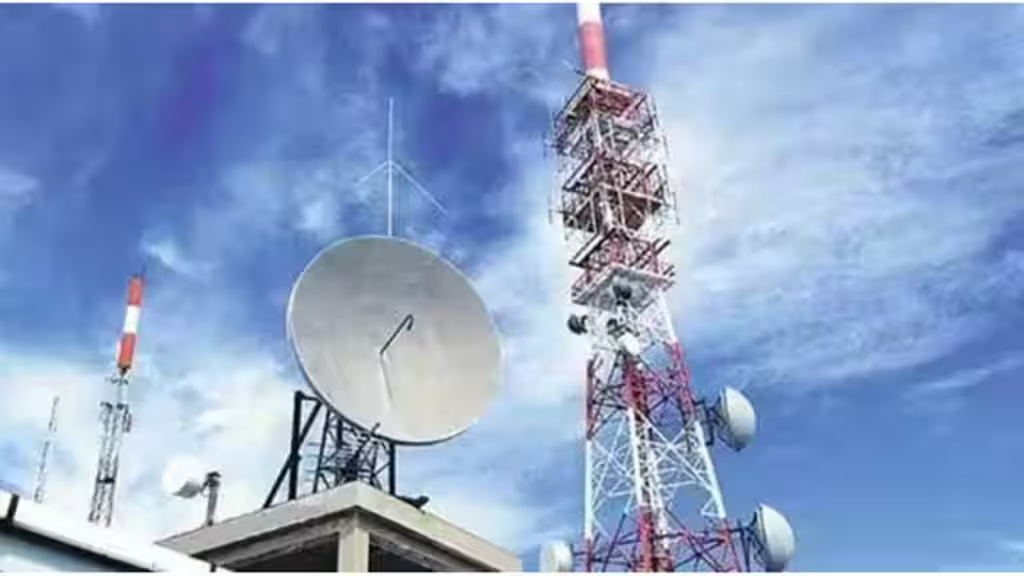Written by Lt. Gen. Dr. S.P. Kochhar, Director General, COAI
27 September 2023

In our increasingly interconnected world, the telecommunications industryserves as the backbone of global connectivity. However, as the specter of climate change looms large, there is an urgent need to pivot towards more sustainable and eco-friendly practices. Enter green telecom networks, a transformative concept that places energy efficiency, carbon emissions reduction and long-term sustainability at the forefront of its operations. Here’s a peek into the pivotal role that green technologies like fuel cells and hydrogen cells play within the framework of green telecom networks, and their significance in steering the industry towards a more environmentally responsible future.
Need for Green Telecom
Telecom operators currently account for a notable 1.6% of global CO2 emissions within the Information and Communication Technology (ICT) sector. With the imminent proliferation of the present 5G and future 6G technologies and their diverse applications, this figure is poised to surge, making it imperative for the industry to undertake a sustainable transformation. As per a report by the Japan Science and Technology Agency, the world IP traffic is estimated to reach 30 times more than the present in 2030 and 4,000 times in 2050. Assuming that related technologies remain similar, the electric power consumption for the same is estimated to reach 42PWh annually in 2030, and 5000PWh in 2050, much greater than the current world electricity consumption of about 24PWh. So, cost-effective throughput is as important a reason for transitioning to green technologies, as is mitigating climate change and reducing carbon footprints.
Technology advancements
Some advancements in Green Telecom are already showing the way for more efficient energy usage. For example, the evolution of Energy-Efficient Equipment like routers, switches and base stations now facilitate advanced power management systems and energy-efficient components, yielding substantial energy savings for operators. Intelligent network technologies also reduce the amount of equipment needed by optimizing the utilization of the equipment, thus reducing capex. Furthermore, intelligent base station designs can dynamically adjust power consumption, enhancing efficiency during off-peak hours.
Integration of renewable energy is invariably the right path forward. We can see that solar panels, wind turbines and innovative energy kites are reshaping the energy landscape across the world. Solar panels harness sunlight in sun-drenched regions, while wind turbines generate clean electricity in areas with consistent wind patterns. Energy kites, on the other hand, utilize high-altitude winds for reliable energy generation with minimal environmental impact. Through subtle design innovations and integration, these could contribute significantly to the energy needs of the telecom sector.
When it comes to digital infrastructure, submerged data centers represent a groundbreaking approach to cooling and power consumption. Placed underwater, these centers utilize natural water cooling to maintain ideal server temperatures. Additionally, liquid and free cooling techniques promise to further boost energy efficiency in telecom operations.
Network Optimization via advanced algorithms, dynamic spectrum access and IoT-enabled optimizations can streamline network operations for energy efficiency. Intelligently routing data and optimizing resources help conserve power, while IoT sensors optimize cooling and fuel monitoring, making networks more efficient while also helping reduce opex.
Key energy-demand and cost-reduction opportunities include waste management protocols and material recycling, essential facets of telecom sustainability. Many RAN suppliers are also investing in green technologies for the upcoming 6G era, such as zero-energy devices and reconfiguring intelligent surfaces.
Rise of Fuel Cells
In the quest for uninterrupted network connectivity, the telecom industry is undergoing a significant shift. Conventional backup power sources, such as diesel generators, are being eclipsed by the adoption of fuel cells. These innovative energy systems offer reliability and eco-friendliness, positioning them as ideal solutions for standalone operations. Their continuous operation, minimal emissions, longevity and reduced maintenance needs make them a compelling choice.
Hydrogen fuel cells are one of the best sustainable fuel cell options, using hydrogen to produce only water as a byproduct, ensuring zero emissions. Their benefits for Base Transceiver Stations (BTS) include high energy density, eco-friendliness, scalability and flexible storage. The automobile sector is increasingly exploring these cells for commercial vehicles. India’s Hydrogen Fuel Cell Vehicle Market is projected to grow from USD 900.24 Mn in 2023 to USD 1737.9 Mn by 2028, with a CAGR of 14.06%.
Government Initiatives and the Path Forward
Governments globally are emphasizing green technology. For instance, India is taking significant steps to promote cleaner and more efficient technologies, including the National Green Hydrogen Mission, with an outlay of INR 19,700 crore, which aims to make India a global leader in green hydrogen production. This has also given a fillip to prospects of the energy source in the automotive industry. Such efforts are pivotal for the adoption of green telecom networks. In conclusion, integrating greener technologies such as fuel/hydrogen cells in telecom is essential. As telecom grows to address rising connectivity needs, so does energy use. Green telecom networks offer a bright future for both industry and the planet, aligning with global sustainability objectives.
